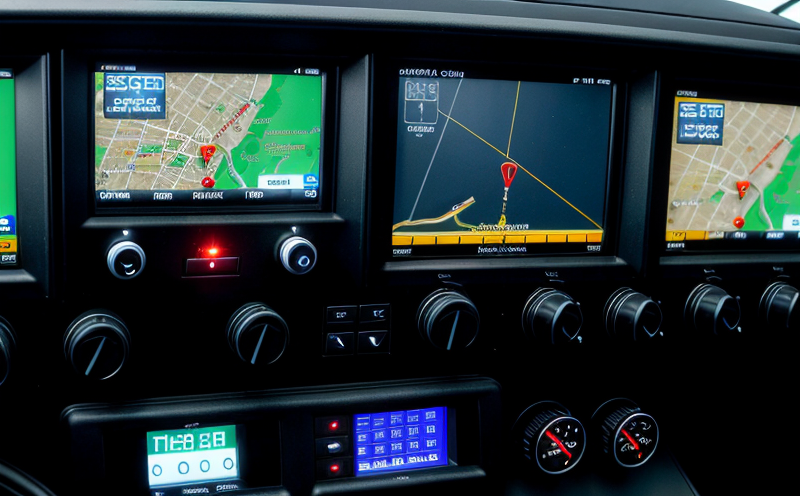ISO 19012 Horizontal and Vertical Divergence Angle Testing
The ISO 19012 horizontal and vertical divergence angle test is a critical procedure for ensuring the proper functioning of navigation lighting systems on marine vessels. This test evaluates the angular deviation of light emitted by these systems, which is essential for safe maritime navigation. The primary objective is to ensure that the light emitted from navigation lights meets specific standards set forth in ISO 19012 and related international guidelines.
The test involves subjecting the lighting system to a series of angular measurements using specialized equipment designed to assess both horizontal and vertical divergence angles. These angles are crucial for ensuring that the light patterns are within acceptable limits as defined by regulatory bodies. This process is important not only for compliance but also for enhancing safety on the high seas.
During the test, the specimen (the navigation lighting system) is positioned in a controlled environment where its light output is measured at various angles. The equipment used includes photometers and other precision instruments capable of measuring angular deviation accurately. The results are then compared against specified acceptance criteria to determine if the product meets the required standards.
Understanding the importance of this test for marine navigation is vital, especially given the risks associated with inadequate lighting systems on ships. Inadequate or improperly functioning lights can lead to collisions, which have severe consequences both in terms of human life and maritime property damage.
The horizontal and vertical divergence angles are measured using a setup that replicates real-world conditions as closely as possible. This includes considering factors like atmospheric conditions and the angle at which light strikes various surfaces. The test is designed to ensure that the emitted light can be seen and recognized clearly under all relevant conditions, thereby enhancing safety.
The ISO 19012 standard ensures consistent performance across different manufacturers and models of navigation lighting systems, promoting a level playing field in the maritime industry. By adhering to this standard, companies can ensure that their products are reliable and meet the necessary criteria for safe maritime operations.
In summary, the ISO 19012 horizontal and vertical divergence angle test is an essential step in ensuring the quality and safety of marine navigation lighting systems. It plays a pivotal role in maintaining compliance with international standards while also enhancing operational efficiency and safety on the seas.
Applied Standards
| Standard Number | Description |
|---|---|
| ISO 19012:2017 | Light and Lighting — Horizontal and Vertical Divergence Angle of Light from Navigation Lights |
Why Choose This Test
The ISO 19012 horizontal and vertical divergence angle test is chosen for its critical role in ensuring the safety and efficiency of navigation lighting systems. By conducting this test, marine equipment manufacturers can demonstrate their commitment to quality and compliance with international standards. This not only enhances product reliability but also fosters trust among customers who rely on these systems for safe maritime operations.
The test is particularly important given the dynamic nature of the marine environment where lighting conditions can vary significantly depending on weather, time of day, and other factors. Ensuring that navigation lights meet specific divergence angle criteria helps mitigate risks associated with poor visibility or misalignment of light patterns.
For quality managers and compliance officers involved in procurement processes, this test provides a reliable method for verifying product specifications. It ensures that the equipment purchased meets not only local but also international standards, thus reducing the risk of non-compliance issues later on.
R&D engineers benefit from this testing process by gaining insights into how their designs perform under various conditions. This information can be crucial in refining future iterations of navigation lighting systems to better meet evolving requirements and improve overall performance.
From a broader perspective, choosing the ISO 19012 horizontal and vertical divergence angle test ensures that all participants in the maritime industry adhere to best practices for safety and efficiency. This contributes significantly to the overall reliability of marine navigation lighting systems, ultimately benefiting everyone involved—from manufacturers and installers to ship operators and seafarers.
Quality and Reliability Assurance
- Comprehensive testing of horizontal and vertical divergence angles ensures consistent performance across all models.
- Evaluation against ISO 19012 standards guarantees compliance with international regulations.
- Precision equipment used for measurement enhances accuracy and reliability of results.
- Regular calibration of instruments maintains high-quality testing capabilities over time.





